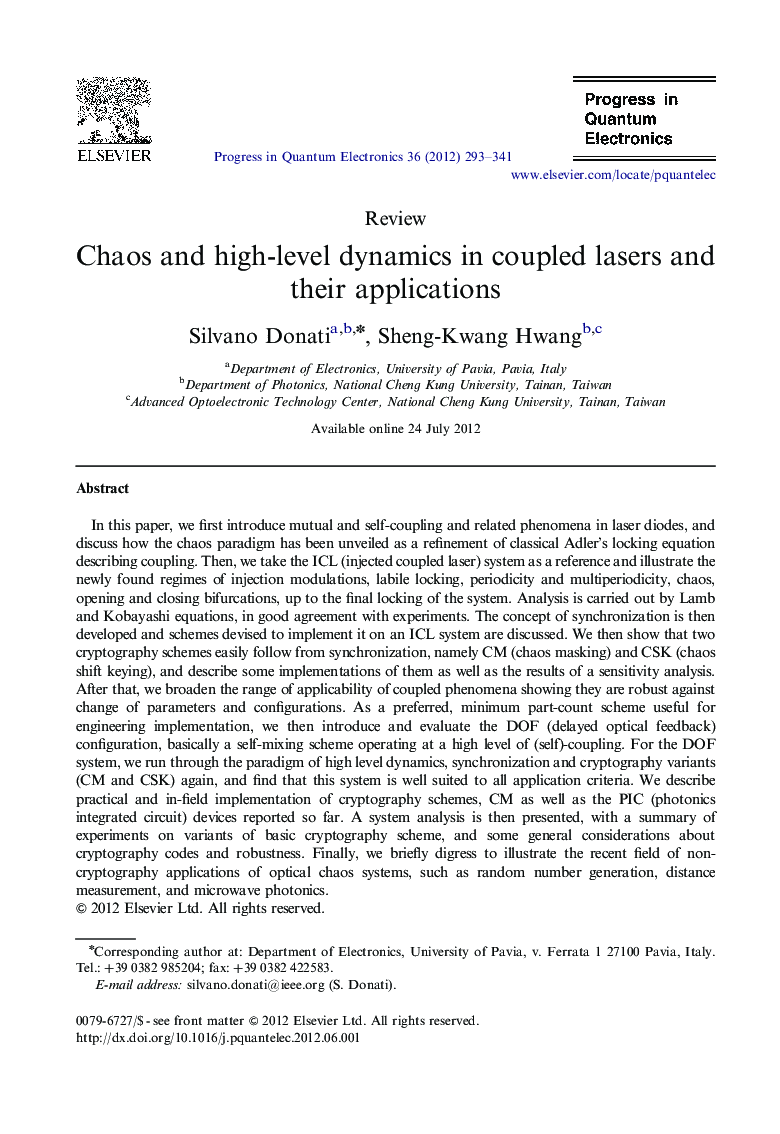| Article ID | Journal | Published Year | Pages | File Type |
|---|---|---|---|---|
| 1549166 | Progress in Quantum Electronics | 2012 | 49 Pages |
In this paper, we first introduce mutual and self-coupling and related phenomena in laser diodes, and discuss how the chaos paradigm has been unveiled as a refinement of classical Adler's locking equation describing coupling. Then, we take the ICL (injected coupled laser) system as a reference and illustrate the newly found regimes of injection modulations, labile locking, periodicity and multiperiodicity, chaos, opening and closing bifurcations, up to the final locking of the system. Analysis is carried out by Lamb and Kobayashi equations, in good agreement with experiments. The concept of synchronization is then developed and schemes devised to implement it on an ICL system are discussed. We then show that two cryptography schemes easily follow from synchronization, namely CM (chaos masking) and CSK (chaos shift keying), and describe some implementations of them as well as the results of a sensitivity analysis. After that, we broaden the range of applicabilìty of coupled phenomena showing they are robust against change of parameters and configurations. As a preferred, minimum part-count scheme useful for engineering implementation, we then introduce and evaluate the DOF (delayed optical feedback) configuration, basically a self-mixing scheme operating at a high level of (self)-coupling. For the DOF system, we run through the paradigm of high level dynamics, synchronization and cryptography variants (CM and CSK) again, and find that this system is well suited to all application criteria. We describe practical and in-field implementation of cryptography schemes, CM as well as the PIC (photonics integrated circuit) devices reported so far. A system analysis is then presented, with a summary of experiments on variants of basic cryptography scheme, and some general considerations about cryptography codes and robustness. Finally, we briefly digress to illustrate the recent field of non-cryptography applications of optical chaos systems, such as random number generation, distance measurement, and microwave photonics.
